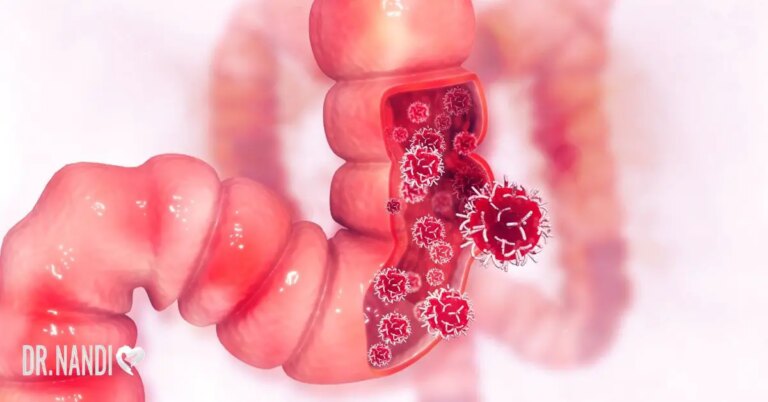Think of a root spice that closely resembles ginger, exhibits qualities like turmeric, but has been shown to combat cancer effectively and promote brain health. You might not have guessed it, but we’re talking about galangal.
A significant member of the ginger family, galangal is a staple herb in Southeast Asian cooking, originating from China and Thailand. Despite its culinary value, the health benefits of galangal are remarkable, demonstrating positive effects on eight different types of cancer and reducing inflammation better than some medications.
Unveiling Galangal: The Secret Spice of Asian Herbal Medicine
Galangal pertains to four plant species in the Zingiberaceae family: Alpinia galanga (greater galangal), Alpinia officinarum (lesser galangal), Kaempferia galanga (kencur, black galangal, or sand ginger), or Boesenbergia rotunda (Chinese ginger or fingerroot). These rhizomes grow underground and are treasured for their health-enhancing benefits. [1,2]
With a history rooted in Ayurvedic medicine, galangal is now predominantly featured in Thai and traditional Chinese food. Despite its striking resemblance to ginger, galangal is a unique root spice described as a mixture of earthy and citrus-like tones with a spicy kick. Its fiery sensation quickly subsides, unlike the lasting burn delivered by capsaicin in spicy foods. [1,2]
Although Galangal might not be as prevalent in Western cooking, its popularity is on the rise due to its reputation as an Asian herbal medicine and its role in natural health remedies.
Galangal’s Nutritional Profile
A 100-gram serving of Galangal root includes:
- 70 calories
- 15 grams of carbohydrates
- 1.2 gram of protein
- 0.5 gram of fat
- 2.4 grams of fiber
- 9% Vitamin C [3]
Despite the nutritional profile, serving sizes vary per recipe, and some might include only a minute amount of the spice.
Unpacking the Health Benefits of Galangal
With its distinct flavor, galangal not only delights the palate but also offers a wide range of health benefits. From its remarkable ability to combat cancer and enhance male fertility to its anti-inflammatory and cardiovascular support, galangal proves to be a versatile and powerful ally for overall well-being.
1. Powerful Cancer-Fighting Properties
An impressive array of scientific research suggests that galangal could be a game-changer in combating a broad spectrum of cancers and tumors. Here’s a closer look at the types of cancer that galangal may help fight:
- Gastric Cancer: A study from Iran found that a liquid extract of galangal significantly diminished gastric cancer cells after 48 hours. [4]
- Leukemia: Researchers have tested galangal extract on acute monocytic leukemia cells, showing potential as a natural treatment without damaging healthy cells. [5]
- Melanoma: A study from Taiwan revealed that compounds from galangal root stopped the growth of new cells in human melanoma (skin cancer). [6]
- Pancreatic Cancer: Research indicates that galangal compounds can inhibit the growth of new cells in pancreatic cancer and suppress gene pathways responsible for expanding the cancer’s impact. [7]
- Colon Cancer: Initial studies on human colon cancer cells revealed that galangal could cause apoptosis (cell death) in two types of colon cancer cells. [8]
- Breast Cancer: Studies demonstrated that an extract of galangal induced apoptosis in the human breast cancer cell line, MCF-7, but did not harm healthy breast cells. [9,10]
- Liver (Hepatic) Cancer: Research showed that compounds from galangal could decrease instances of metastasis by inhibiting the attachment of cancer cells to healthy cells. [11]
- Cholangiocarcinoma (Bile Duct Cancer): A study from Thailand showed that kaempferol rhizome extract from galangal extended the lifespan of mice subjects and reduced metastasis incidence. [12]

2. Men’s Fertility Booster
Galangal root might prove useful in promoting male fertility. In a rat model, researchers discovered that it increased sperm count and motility.[13] A human study also indicated that galangal rhizome, paired with pomegranate fruit extract, increased the number of motile sperm threefold.[14]
3. Soothing Anti-Inflammatory Agent
Chronic inflammation is linked with the development of many diseases, including cancer, heart disease, Alzheimer’s, and more. Galangal root has shown promising anti-inflammatory effects on the body. Research at Rutgers University revealed that a phytonutrient found in galangal suppresses the activity of TNF-alpha, a protein that can cause detrimental damage if overstimulated. [15]
4. Cardiovascular Health Support
Galangal has been shown to have potential benefits for cardiovascular health. According to a study, galangal extract has a cardioprotective effect on heart function in rats, indicating its possible therapeutic use for cardiovascular diseases. [16]
5. Nature’s Tummy Tamer for Digestion
Traditionally, galangal has been used in Ayurvedic and traditional Chinese medicine to treat various digestive issues. It can help stimulate the digestive process, relieve discomfort from indigestion, and prevent nausea. It may also be useful for people suffering from diarrhea, stomach cramps, and bloating. [2]
6. Strong Defense Against Infections
Galangal contains antibacterial and antifungal properties that can help fight infections. Studies have shown that galangal extract has the potential to inhibit the growth of a variety of bacteria and fungi. This includes drug-resistant pathogens, making it a potential natural option for treating antibiotic-resistant infections. [17]
7. Nourishment for Cognitive Health
Galangal has demonstrated neuroprotective effects, potentially improving cognitive health. In a study involving mice, the administration of galangal extract resulted in improved memory and cognitive function. Additionally, it showed anti-aging effects on the brain, suggesting that it may help slow down the process of neurodegeneration associated with diseases like Alzheimer’s. [18]
Potential Side Effects of Galangal
While side effects from galangal consumption are rare, they can occur, especially when the herb is consumed in amounts beyond those typically found in food. As with many herbs, it is generally advised to avoid galangal during pregnancy unless under the close supervision of a healthcare provider.
Galangal, particularly Alpinia galanga or greater galangal, is generally considered a hypoallergenic food. Some literature even suggests it may lessen the severity of allergic reactions. Therefore, the likelihood of experiencing allergic symptoms after consuming it is quite low.
However, it’s worth noting that greater galangal may stimulate increased stomach acid production. Those with conditions like GERD or peptic ulcer disease may want to avoid galangal unless it’s recommended by their primary healthcare provider.
High doses of galangal may cause side effects such as upset stomach, diarrhea, and lethargy. These could possibly be due to acute oral toxicity, although the only evidence for such reactions comes from studies in mice. If you notice any of these symptoms after consuming galangal, reduce your intake.

My Personal RX for Reducing Cancer Risk
As a healthcare professional, I recommend several lifestyle choices to promote general wellness and possibly lower the risk of diseases such as cancer. Here’s what you can do to stay healthy:
- Maintain a Balanced Diet: Consuming a diet rich in a variety of fruits, vegetables, lean proteins, whole grains, and healthy fats can provide the body with essential nutrients. It’s important to note that many studies link a balanced diet with a lower risk of cancer.
- Exercise Regularly: Physical activity is vital for maintaining a healthy weight and reducing the risk of several diseases, including certain types of cancer.
- Connect With Nature: Engaging with the natural world can be an excellent way to reduce stress, a factor that contributes to several health conditions, including cancer.
- Ensure Adequate Sleep: Quality sleep is critical for the body’s healing, recovery, and rejuvenation processes. Chronic sleep deprivation has been linked to various health conditions, including an increased risk of cancer.
- Embark on a Holistic Wellness Journey: Get a free copy of my protocol ebook for practical tips and strategies on how to make significant changes to your health and lifestyle, helping you boost cancer prevention and improve your quality of life.
- Detox Naturally With My Detox Bundle: The Detox Bundle, designed to support your body’s natural detoxification processes, can help maintain optimal health. Ensuring the body’s detoxification systems are working correctly is often considered a key part of cancer prevention strategies.
Remember, while lifestyle changes can help reduce the risk of cancer, they don’t guarantee prevention. Always consult with your healthcare provider before starting any new health regimen. Your health is your most valuable asset; treat it with care.

Sources:
- Ravindran, P. N., Pillai, G. S., Balachandran, I., & Divakaran, M. (2012). Galangal. In Elsevier eBooks (pp. 303–318). https://doi.org/10.1533/9780857095688.303
- Amalraj, A., AC, K. V., Jude, S., & Kuttappan, S. (2023). Galangal—Roles in nutraceuticals and functional foods. In Elsevier eBooks (pp. 95–109). https://doi.org/10.1016/b978-0-323-90794-1.00016-8
- Galanga Root Nutrition Facts | Food Tracker & Calorie counter website www.CalForLife.com. (n.d.). https://www.calforlife.com/calories/galanga-root
- Hadjzadeh, M. (2014b, January 1). The effects of aqueous extract of alpinia galangal on gastric cancer cells (AGS) and L929 cells in vitro. Iranian Journal of Cancer Prevention. https://www.ncbi.nlm.nih.gov/pmc/articles/PMC4171825/
- Omoregie, S. N., Omoruyi, F. O., Wright, V. F., Jones, L., & Zimba, P. V. (2013). Antiproliferative Activities of Lesser Galangal (Alpinia officinarum Hance Jam1), Turmeric (Curcuma longa L.), and Ginger (Zingiber officinale Rosc.) Against Acute Monocytic Leukemia. Journal of Medicinal Food, 16(7), 647–655. https://doi.org/10.1089/jmf.2012.0254
- Lo, C., Liu, P., Lin, L., Chen, Y., Hseu, Y., Wen, Z., & Wang, H. D. (2013). Antimelanoma and Antityrosinase fromAlpinia galangalConstituents. The Scientific World Journal, 2013, 1–5. https://doi.org/10.1155/2013/186505
- Dong, G., Jeong, J. H., Lee, Y., Lee, S. Y., Zhao, H., Jeon, R., Lee, H. J., & Ryu, J. (2017). Diarylheptanoids suppress proliferation of pancreatic cancer PANC-1 cells through modulating shh-Gli-FoxM1 pathway. Archives of Pharmacal Research, 40(4), 509–517. https://doi.org/10.1007/s12272-017-0905-2
- Ha, T. K., Kim, M. E., Yoon, J. H., Bae, S. J., JiHye, Y., & Lee, J. S. (2013). Galangin induces human colon cancer cell death via the mitochondrial dysfunction and caspase-dependent pathway. Experimental Biology and Medicine, 238(9), 1047–1054. https://doi.org/10.1177/1535370213497882
- Samarghandian, S., Hadjzadeh, M., Afshari, J. T., & Hosseini, M. (2014). Antiproliferative activity and induction of apoptotic by ethanolic extract of Alpinia galanga rhizhome in human breast carcinoma cell line. BMC Complementary and Alternative Medicine, 14(1). https://doi.org/10.1186/1472-6882-14-192
- Song, W., Yan, C., Zhou, Q., & Zhen, L. (2017). Galangin potentiates human breast cancer to apoptosis induced by TRAIL through activating AMPK. Biomedicine & Pharmacotherapy, 89, 845–856. https://doi.org/10.1016/j.biopha.2017.01.062
- Chien, S., Shi, M., Lee, Y., Te, C., & Shih, Y. (2015). Galangin, a novel dietary flavonoid, attenuates metastatic feature via PKC/ERK signaling pathway in TPA-treated liver cancer HepG2 cells. Cancer Cell International, 15(1). https://doi.org/10.1186/s12935-015-0168-2
- Amuamuta, A., Plengsuriyakarn, T., & Na-Bangchang, K. (2017). Anticholangiocarcinoma activity and toxicity of the Kaempferia galanga Linn. Rhizome ethanolic extract. BMC Complementary and Alternative Medicine, 17(1). https://doi.org/10.1186/s12906-017-1713-4
- Molecullar and biochemical effect of alcohlic extract of Alpinia galanga on rat spermatogenesis process. (2014, November 1). Iranian Journal of Reproductive Medicine. https://pubmed.ncbi.nlm.nih.gov/25709632/
- Fedder, M. D., Jakobsen, H., Giversen, I., Christensen, L. P., Parner, E. T., & Fedder, J. (2014). An extract of pomegranate fruit and galangal rhizome increases the numbers of motile sperm: a prospective, Randomised, Controlled, Double-Blinded trial. PLOS ONE, 9(10), e108532. https://doi.org/10.1371/journal.pone.0108532
- Yadav, P. N., Liu, Z., & Rafi, M. (2003). A Diarylheptanoid from Lesser Galangal (Alpinia officinarum) Inhibits Proinflammatory Mediators via Inhibition of Mitogen-Activated Protein Kinase, p44/42, and Transcription Factor Nuclear Factor-κB. Journal of Pharmacology and Experimental Therapeutics, 305(3), 925–931. https://doi.org/10.1124/jpet.103.049171
- Kokandy, A. A. (2021). The Protective Effects of Galangal (Alpinia galanga) Against Cyclophosphamide-Induced Cardiotoxicity in Rats. https://doi.org/10.33422/4th.icarest.2021.08.184
- Weerakkody, N. S., Caffin, N., Lambert, L. K., Turner, M. S., & Dykes, G. A. (2010). Synergistic antimicrobial activity of galangal (Alpinia galanga), rosemary (Rosmarinus officinalis) and lemon iron bark (Eucalyptus staigerana) extracts. Journal of the Science of Food and Agriculture, 91(3), 461–468. https://doi.org/10.1002/jsfa.4206
- Kojima-Yuasa, A., Yamamoto, T., Yaku, K., Hirota, S., Takenaka, S., Kawabe, K., & Matsui-Yuasa, I. (2016). 1′-Acetoxychavicol acetate ameliorates age-related spatial memory deterioration by increasing serum ketone body production as a complementary energy source for neuronal cells. Chemico-Biological Interactions, 257, 101–109. https://doi.org/10.1016/j.cbi.2016.07.031


















